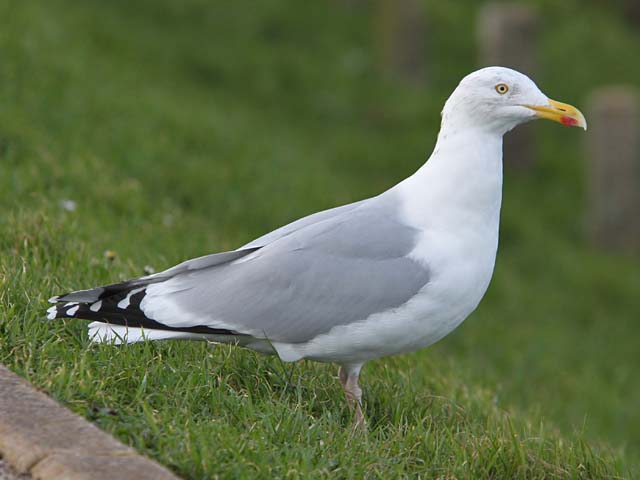Gulls play the field in UK schools
A UK-wide survey of wildlife in schools has revealed that playing fields provide decent stomping grounds for some of the UK's gull species, including the red-listed Herring Gull. Numbers of Herring Gulls reported in school grounds have been steadily increasing: this year they reached number 17 in the list of most-seen birds, with 10.3% of schools taking part in the RSPB's Big Schools' Birdwatch recording the species. In addition, 40.4% of schools recorded Black-headed Gulls, with 21.7% noting Common Gulls.
Open playing fields often prove to be rich feeding areas: the short-cropped grass is ideal for birds to find natural food supplies. Gulls are particularly resourceful, and forage for food by stamping their feet on the ground to encourage invertebrates to the surface. As a species suffering a decline of over 50% within the UK, the importance of playing fields to Herring Gulls is recognised and research is ongoing into why the species' numbers have fallen so much in recent times.

Herring Gull, Otter Estuary NR, Devon (Photo: Derek Washington)
Almost 90,000 schoolchildren and teachers took part in the annual survey, which took place in the final two weeks of January. This equates to nearly 3,000 classes from over 2,000 schools. More than 110,000 birds were counted in this year's survey and, since its launch in 2002, over 70 species have been recorded in school grounds.
Leading the way in 2012 was the Blackbird — the fourth year running it has claimed top spot — with 85.6% of schools recording the species at an average of 5.4 birds per site. In milder winters, Blackbirds prosper on playing fields, which provide the ideal habitat in which to search for worms and grubs. Starling just edged Woodpigeon into second place, with both species averaging 3.46 birds per school. A full list of the top ten species can be found below.
Top ten species recorded in the RSPB Big Schools' Birdwatch
| Rank | Species | Average per school 2012 (rank) | % of schools in 2012 |
|---|---|---|---|
| 1 | Blackbird | 5.40 | 85.6 |
| 2 | Starling | 3.46 | 41.5 |
| 3 | Woodpigeon | 3.46 | 60.2 |
| 4 | Black-headed Gull | 3.42 | 40.4 |
| 5 | House Sparrow | 3.31 | 56.5 |
| 6 | Carrion Crow | 3.12 | 55.4 |
| 7 | Blue Tit | 3.06 | 71.1 |
| 8 | Magpie | 2.07 | 57.1 |
| 9 | Robin | 1.92 | 69.7 |
| 10 | Chaffinch | 1.67 | 46.3 |
Faye Mackender, RSPB Big Schools' Birdwatch project manager, said, "the Big Schools' Birdwatch is a brilliant way to get young people interested in nature and excited about what they can see through the classroom window. It's all too easy for them to miss those opportunities to get outside and understand the world around them. Big Schools' Birdwatch gives children the chance to step up for nature."
Contact with nature is now widely recognised as playing an important role in a child's education and social development. Independent research has found that such activities can have a positive impact on children's mental and physical health. The Big Schools' Birdwatch can be integrated into many curriculum areas; increasingly, schools are making the activity the centrepiece of a week devoted to learning about wild birds. Some schools hold Birdwatch breakfasts or after-school wildlife clubs, while others have been transforming classrooms into bird hides. Since its launch, the survey has grown in popularity and the RSPB has also introduced the Little Schools' Birdwatch, especially designed for those aged five and under. In addition, the Really Big Schools' Birdwatch has been introduced for 11–14 year olds.
Mrs Allen, a teacher at Upminster Junior School (London), said of her class, "[the children] all had great fun identifying the birds that came to our school garden and we hope that this may have sparked a lifelong interest."
For the full Big Schools' Birdwatch results, please visit www.rspb.org.uk/schoolswatch.

